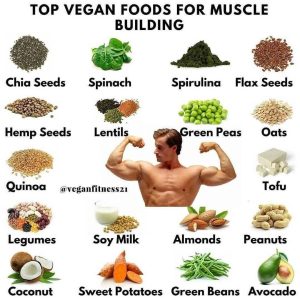
With the growing popularity of gluten-free diets, many people have turned to gluten-free baking as a way to enjoy their favorite treats without compromising their dietary needs. However, gluten-free baking can be a challenge, as gluten is the protein responsible for giving bread and baked goods their structure and elasticity. In this article, we will explore some tips and tricks to help you achieve delicious gluten-free results.
1. Choose the Right Gluten-Free Flours
When it comes to gluten-free baking, the right flour blend is crucial for achieving the desired texture and flavor. Some popular gluten-free flours include rice flour, almond flour, coconut flour, and tapioca flour. Experiment with different blends to find the perfect combination for your recipes. You can also enhance the flavor and nutritional value by adding a small amount of nut flours or seeds to your blends. It is important to note that gluten-free flours can be denser, so consider adding a binding agent such as xanthan gum or guar gum to improve the texture.
2. Measure Accurately
Unlike traditional baking, where a little variation in measurements may not make a significant difference, gluten-free baking requires precise measuring. Use a kitchen scale to weigh your ingredients for better accuracy, as different gluten-free flours have varying densities. Also, avoid packing the flour into the measuring cup, as it can result in excess flour and alter the texture of the baked goods.
3. Incorporate Moisture-Rich Ingredients
Gluten-free flours tend to absorb more liquid than wheat-based flours, which can lead to dry and crumbly baked goods. To combat this, incorporate moisture-rich ingredients into your recipes. This can include mashed bananas, applesauce, yogurt, or even avocado. Not only will these ingredients provide moisture, but they also contribute to the overall flavor and richness of your baked goods.
4. Experiment with Binders
As mentioned earlier, gluten is responsible for the structure and binding of traditional baked goods. Without gluten, it becomes necessary to experiment with alternative binders. Xanthan gum and guar gum are commonly used in gluten-free baking to provide elasticity and improve texture. However, you can also try chia seeds, flaxseed meal, or psyllium husk as natural binders. Remember to follow the recommended measurements to avoid creating a gummy texture.
5. Don’t Overmix the Batter
Overmixing gluten-free batter can result in a dense and gummy texture. To avoid this, mix your batter until all the ingredients are just combined. This will prevent the formation of excess air bubbles, which can cause the baked goods to collapse. If the batter seems lumpy, it’s perfectly fine, as long as all the dry ingredients are fully incorporated. Patience is key when it comes to gluten-free baking.
6. Allow for Proper Rising Time
Gluten-free bread and baked goods often require longer rising times compared to their gluten-containing counterparts. This is because gluten aids in the rise and structure of traditional baked goods. To achieve optimal results, allow your gluten-free dough or batter enough time to rise according to the recipe instructions. Be patient and avoid rushing the process, as it can impact the final texture and density of your baked goods.
7. Consider Using an Oven Thermometer
Many ovens have temperature discrepancies, which can affect the baking time and results. Invest in an oven thermometer to accurately monitor the temperature and make any necessary adjustments. This will ensure that your gluten-free baked goods are cooked evenly and to perfection. Baking gluten-free can be both a challenging and rewarding experience. By following these tips and tricks, you can improve your gluten-free baking skills and achieve delicious results every time. Remember to experiment, be patient, and have fun in the kitchen. With the right techniques and ingredients, gluten-free baking can be a delightful way to enjoy your favorite treats without sacrificing taste or dietary needs.

